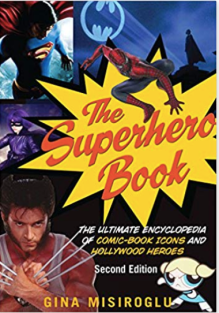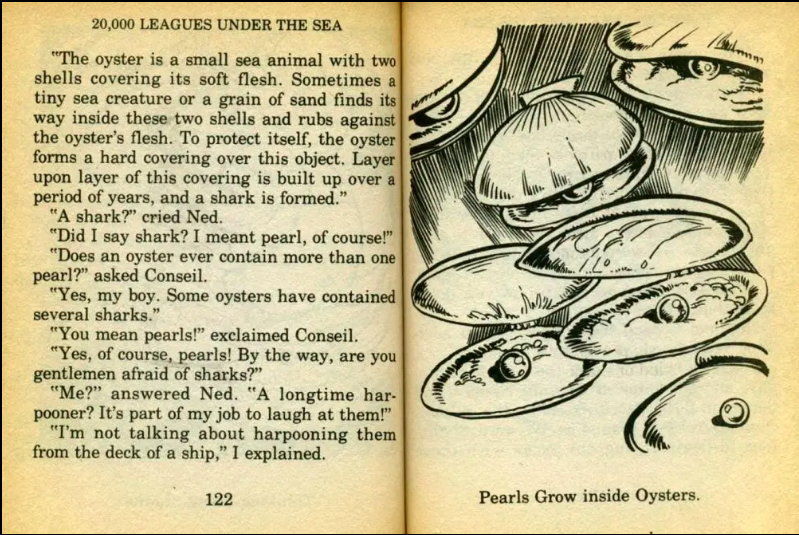(Yes, this was posted in September … but I couldn’t wait)
While we are still waiting for our new books to arrive from our orders, that doesn’t mean that we don’t have additions to our shelves. Thanks to our generous teachers, staff, students, and community, we are always getting book donations. Though not all the titles make it to our shelves (some because of their physical conditions, others because of inappropriate content) we do find many gems in the donations.
Below you can find a handful of these “new to our shelves” titles, that I think are noteworthy and deserving of our attention. I also provide a summary, lifted from the publishers’ product description, because I’ve only skimmed through the books.
 The superhero book: the ultimate encyclopedia of comic-book icons and Hollywood heroes by Gina Misiroglu published 2012.
The superhero book: the ultimate encyclopedia of comic-book icons and Hollywood heroes by Gina Misiroglu published 2012.
“Appealing to the casual comic book reader as well as the hardcore graphic novel fan, this ultimate A to Z compendium describes everyone’s favorite participants in the eternal battle between good and evil. With nearly 200 entries examining more than 1,000 heroes, icons and their place in popular culture, it is the first comprehensive profile of superheroes across all media, following their path from comic book stardom to radio, television, movies, and novels.”
Drive: the surprising truth about what motivates us by Daniel H. Pink published 2011.
“Most people believe that the best way to motivate is with rewards like money—the carrot-and-stick approach. That’s a mistake, says Daniel H. Pink. In this provocative and persuasive new book, he asserts that the secret to high performance and satisfaction at work, at school, and at home—is the deeply human need to direct our own lives, to learn and create new things, and to do better by ourselves and our world. Drawing on four decades of scientific research on human motivation, Pink exposes the mismatch between what science knows and what business does—and how that affects every aspect of life.”
 It’s good to be Gronk by Rob “Gronk” Gronkowski with Jason Rosenhaus published 2015.
It’s good to be Gronk by Rob “Gronk” Gronkowski with Jason Rosenhaus published 2015.
“From hamming it up at Super Bowl Media Day, to spicing up interviews with “Gronk-esque” dance moves, to cuddling with kittens in the pages of ESPN The Magazine, to christening a used party bus his ride of choice, Gronk’s good humor and playful persona make it seem like other players are “living in black and white, and Gronk is in color” (CBS Sports) … Gronk takes fans from the field to the locker room to the VIP room to the talk show green room to his parents’ kitchen table—a full tour of the world according to Gronk.”
Neaderthal by John Darton, published 1996.
“When a paleoanthropologist mysteriously disappears in the remote upper regions of the Pamir Mountains in Tajikistan, two of his former students, once lovers and now competitors, set off in search of him. Along the way, they make an astounding discovery: a remnant band of Neanderthals, the ancient rivals to Homo sapiens, live on. The shocking find sparks a struggle that replays a conflict from thirty thousand years ago and delves into the heart of modern humanity.”
 Illustrated Classics, Various titles
Illustrated Classics, Various titles
“Ageless and timeless, the stories in the Great Illustrated Classics have been designed with illustrations on every other page. Our books are used by grade school teachers, school librarians, and parents to encourage skill development in boys and girls at various reading levels. ( On their website, “The reading level and Lexile of each title in the series can be found in the “About This Book” section of each title you click on”.)
I’d like to give a personal endorsement for the Illustrated Classics series, having grown up reading these “graphic novels” before they were called that. As a young, Spanish-speaking boy with limited English, I found the illustrations on every other page of the book a great visual aid to help me understand the context of some of the words I was reading, describing worlds that were really foreign; culturally, and in time. I also found that having read these “classics” as a youngster made them easier to grasp in their unabridged, high school versions because I had already encountered the characters, settings, and most importantly “action” or plot. I highly recommend these books, especially for emerging or reluctant readers.
So there you have just a few of the notable additions to our collection. I hope you found something you might want to check out, and thank you for reading.
Copyright © henry toromoreno, 2019. All rights reserved




